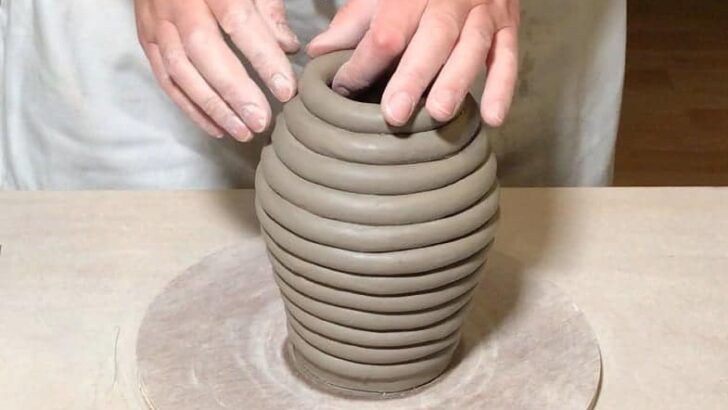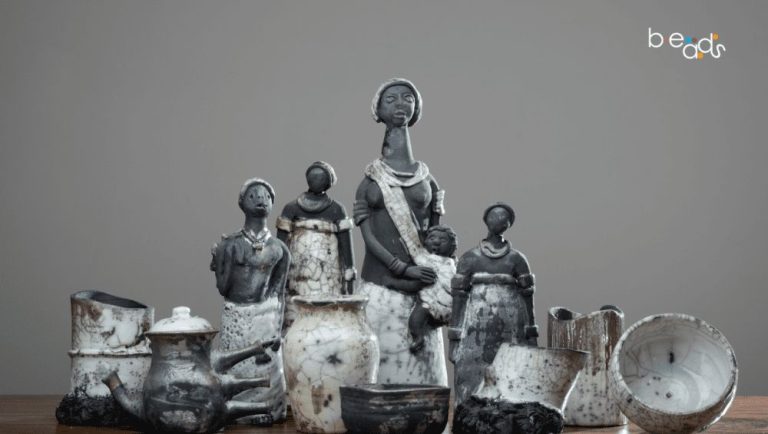Can You Boil Water In A Clay Teapot?
Introducing Clay Teapots
Clay teapots have a long history in Chinese tea culture, dating back to the 15th century during the Ming Dynasty in the area around Yixing in Jiangsu province. The unique Yixing clay was prized for its ability to retain heat and enhance the flavor of the tea (The Great History Of Yixing Teapots). The porous nature of the clay allows it to absorb the flavors and oils of the tea leaves during brewing. Over time, the clay becomes seasoned, adding its own unique flavor to the tea.
There are several types of clay used in making teapots, but the most prized is Zisha or “purple clay” from the Yixing region. It fires to a purple-brown or reddish color. The iron content in the clay allows it to achieve high firing temperatures for increased durability while still retaining a degree of porosity (Yixing clay teapot). Other clays like porcelain have very low porosity, which does not allow them to absorb flavors in the same way.
The natural properties of Yixing clay make it ideal for teapots. It keeps the water hot for steeping the tea leaves properly. The clay’s porosity allows subtle changes in the flavor profile from one infusion to the next. The clay is also durable enough to withstand prolonged use if properly cared for. Many aficionados believe a well-seasoned Yixing pot can actually enhance the tea drinking experience.
Boiling Water in Clay Teapots
Is it safe to boil water in clay teapots? This is actually a matter of some debate. Many clays, especially highly refined or porcelain clays, can withstand temperatures up to 1000°C and higher before damage occurs. However, lower fire clays may only withstand temperatures up to 500°C before the clay body may crack. According to Mud and Leaves, boiling water can reach temperatures between 212-100°C, which may put lower fired clays at risk for damage.
In general, porcelain clays with very high kaolinite content that have been fired to 1200-1300°C will be safe for boiling water, according to Te Company Tea. However, lower fire earthenware clays should not be used for boiling water, as the rapid temperature changes can potentially crack the clay. The safest bet is to use a thermometer and heat water to a maximum of 195°F before pouring into the teapot.
For most high quality teapots made from porcelain, yi xing, or other clays with high kaolin content fired to high temperatures, boiling water is likely safe. However, quick temperature changes and agitation from boiling can potentially damage lower fired earthenware over time. Check the specific clay composition and firing temperature before boiling.
Proper Use and Care
Clay teapots require some special care when heating and cleaning to prevent damage. Here are some tips for proper use and care of clay teapots:
When heating a clay teapot, it’s best to use hot or boiling water rather than placing it directly on a stovetop or open flame. The thermal shock from direct high heat can cause the clay to crack or break. Fill a basin or pot with hot water from an electric kettle or stove, then place the clay teapot in the water to bring it up to temperature gradually. This will protect the clay from damage.
For cleaning, avoid harsh detergents which can strip away the patina in seasoned clay teapots. Instead, simply rinse with hot water and scrub gently with a soft brush to remove tea stains. Allow the teapot to air dry completely before storing, as moisture left inside can lead to mold growth. After cleaning, rub a small amount of edible oil on the inside of the pot to maintain the clay’s natural waterproof barrier.
Proper storage is also key for longevity of clay teapots. Keep them in a dry place away from direct sunlight, extreme temperatures, and humidity fluctuations. Store season teapots with the lid off or slightly ajar to allow airflow and prevent moisture buildup.
With gentle heating, thorough drying, and proper storage, your clay teapot can last for many enjoyable cups of tea.
Examining the Clay’s Composition
The composition of clay is an important factor in determining if water can be boiled in a clay teapot. Clay is composed of fine-grained minerals such as kaolinite, montmorillonite, illite, and chlorite (https://geologyscience.com/minerals/clay-minerals/?amp). The structure and properties of these clay minerals influence the porosity and permeability of the clay material.

Clays have variable porosity depending on their mineral composition. Porosity refers to the empty spaces between the clay particles that can hold water. Montmorillonite has a flaky structure which creates more pore space, while kaolinite has a flat hexagonal sheet structure resulting in low porosity (https://www.intechopen.com/chapters/76780). The permeability of clay describes how easily water can flow through the pores. Clay materials with higher porosity tend to also have higher permeability.
The interaction between water molecules and the clay mineral surfaces is key. Water can adhere to the surface of clay particles and be held tightly via hydrogen bonding, a phenomenon known as hydration. The fine particles of clays have high surface area for water interactions. Montmorillonite has the highest capacity for water hydration (https://www.britannica.com/science/clay-mineral/Chemical-and-physical-properties).
Therefore, the composition of the clay material in a teapot determines characteristics like porosity, permeability, and hydration capability that influence the boiling of water.
The Science of Clay
Clay has some unique properties that make it suitable for boiling water. Two of the most important are its heat capacity and conductivity.
Heat capacity refers to how much energy is required to raise the temperature of the clay. Clays have a moderately high heat capacity, meaning they can absorb a significant amount of heat energy from the boiling water before their own temperature rises drastically. This allows them to heat the water gradually and evenly.
Clays are also decent conductors of heat. While not as conductive as metals, clay can transfer heat energy through the material at a moderate rate. This allows heat to spread evenly throughout the pot walls and base as the water heats up.
The chemical makeup of clay is also key. Clays contain a range of minerals and impurities, but the main component is hydrous aluminum phyllosilicate. This material has a crystalline structure with layers that enables proper heat conduction. The types and ratios of minerals present affect the clay’s melting point, hardness, and thermal properties.
Some clays also undergo vitrification, a process that causes the crystalline structure to become glass-like when fired at high temperatures. This makes the clay less porous and more durable, qualities that benefit a boiling vessel.
By understanding the science behind clay’s thermal behaviors, potters can select and prepare the best types of clay for boiling water effectively. Properties like heat capacity, conductivity, and composition have a direct impact on performance.
According to this article, the thermal behaviors of clay make it uniquely suited for gradually and evenly heating water to a boil.
Ideal Clay Types for Boiling
When selecting a clay for boiling water, it’s important to choose one with minerals that can withstand high temperatures. According to Susie Benes, clays high in alumina or silica tend to be more heat resistant. These include:
- Porcelain – Fired at over 2,300°F, porcelain clays have very compact particles and low porosity, making them ideal for boiling water.
- Stoneware – With good heat resistance up to 2,200°F, stoneware clays are commonly used for teapots and mugs.
- Terracotta – Though more porous than porcelain or stoneware, terracotta can withstand temperatures over 2,000°F.
The preferred firing method is high-fire, which reaches over 2,000°F. This heat treatment vitrifies the clay, fusing the minerals and making the material non-porous and waterproof. Low-fire techniques, firing under 2,000°F, can leave the clay permeable. According to sources on Quora, low-fired earthenware clays are not recommended for boiling water.
Example Clay Teapot Materials
Some of the most popular clays used for teapot making include:
Yixing clay – This purple clay from the Yixing region of China is a very popular choice. It retains heat well and allows the flavor of the tea to develop properly. Yixing clay is porous, so it absorbs the oils and flavors from the tea over time.
Terracotta – This reddish-orange clay has good heat retention properties. Terracotta is an inexpensive and durable option commonly used for teapots and plant pots.
Stoneware – Denser and less porous than earthenware clays, stoneware has excellent heat resistance. Its glazed surface makes it easy to clean. Stoneware teapots are durable and retain heat well.
Teapot Design Considerations
The design of a clay teapot significantly impacts its ability to withstand boiling water. Some key considerations include:
Shape
Rounder, spherical teapots disperse heat more evenly compared to taller, thinner teapots. A round shape minimizes weak points that could crack under rapid heating or temperature changes.
Thickness
Thicker clay holds up better when boiled. Teapot walls should be at least 1/4 inch thick, with the bottom and rim thicker to endure direct heat contact.
Glazing
An interior glaze makes the clay non-porous so water cannot seep in and expand the pot when heated. Exterior glazes also provide protection. Unglazed pots work but require extra care.
Handles and Spouts
Generous looping handles provide insulation from heat. Pouring spouts should also be thick and shaped to avoid dripping. Lids with knobs offer protection when lifting.
The best teapot designs for boiling have a sturdy spherical shape, sufficient thickness, and elements to prevent burns from hot liquids.
Pros and Cons of Boiling
There are some benefits as well as potential risks when it comes to boiling water in clay teapots. On the pro side, boiling water directly in an unglazed clay teapot can enhance the mineral content and flavor of the tea. As the boiling water interacts with the porous clay, minerals from the clay can infuse into the water, softening it and adding trace elements like iron, calcium, and magnesium. This is one reason clay teapots have been prized for tea brewing in many cultures. The clay also helps retain heat well, keeping the brewed tea hotter for longer.
However, there are also some potential downsides to be aware of. Not all clay teapots are designed to withstand extremely high temperatures. Boiling water could potentially crack, warp, or break a clay teapot if it is not made from a clay formulated for heat resistance, or if the walls are too thin. Lower-fired earthenware clays in particular may be more prone to damage from boiling water. It’s important to check the specifications of a clay teapot before attempting to boil water directly in it. Gradual heating is recommended for most clay teapots. Quick temperature changes can also risk damaging the clay.
In summary, boiling water can be done in some high-quality, heat-safe clay teapots to enhance the tea’s flavor, but care should be taken and the teapot should be designed specifically for boiling to avoid damage. Safer options include boiling water separately and pouring it into the teapot, or slowly bringing the water to a boil in the teapot over low heat.
Conclusion
Teapots made from clay offer certain benefits but also limitations. While most quality clay teapots can withstand boiling water, the best teapots are made from optimized clays with higher heat tolerance. The ideal teapot should have thicker walls, high kaolin content clay, and a porcelain design.
Ultimately, it depends on the individual teapot, quality, intended purpose and proper use. With a well-designed, durable clay teapot made for boiling water, it can certainly be safely used for making tea. However, more delicate teapots are better suited for lower temperature steeping. Care should be taken to gradually heat a clay teapot and avoid any sudden temperature shocks.
In summary, clay teapots can boil water but require careful selection and handling. With the right composition and teaware design, a high quality clay teapot presents a classic, natural and sustainable option for loose leaf tea brewing.




